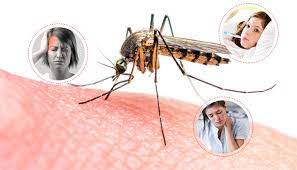Community Assessment on Understanding, Involvement, and Action in The Prevention of Dengue Fever: A Case Study of Mvita Sub-County, Mombasa County, Kenya

Abstract:
Dengue fever is a mosquito-borne viral disease transmitted by the female Aedes Aegypti species. There has been a dramatic increase in Dengue cases globally, many cases being asymptomatic or mild. WHO reports an 8-fold increase in cases over the last two decades, 5.2 million cases in 2019, compared to 2.4 million in 2010 and 505,430 cases in 2000, with a noted increase in fatality cases from 960 to 4032 between years 2000 and 2015. Cases have increased over the last years, with approximately 2.5 billion people at risk (WHO 2019). An estimated 50 million cases occur worldwide annually, with an estimated 500,000 people with DHF requiring hospitalization, the majority being children of less than five years, of whom 2.5% of those affected die. The first Dengue fever outbreak in Kenya was in 1982 in the coastal region, with outbreaks from April-June 2013 and March-June 2014 coinciding with long rains that provide a conducive breeding ground. Mombasa County has environmental conditions favoring mosquito proliferation and interaction with humans, such as a warm climate, high rainfall, and overcrowding. This study realized a major misconception about how Dengue fever is spread when 48% of the respondents recommended sleeping under a mosquito net as the key preventive measure. This study recommends community engagement and sensitization to update on the correct Dengue Fever information, possibly via health promotion activities such as community dialogues, radio talk shows, commercials, and community action days to clear the environment of all items listed and identified as possible Aedes mosquito breeding sites.
Keywords: Aedes Aegypti, Dengue fever, Mosquito.
References:
[1] George R
and Lum LCS (1997) Clinical spectrum of dengue infection. In: Gubler DJ, Kuno G,
eds.
[2] D J Rogers
1, A J Wilson, S I Hay, A J Graham, 2006, The global distribution of yellow fever
and Dengue, PubMed 2006;62:181-220. DOI: 10.1016/S0065-308X (05)62006-4. https://pubmed.ncbi.nlm.nih.gov/16647971/.
[3] Deen JL,
Harris E, Wills B, Balmaseda A, Hammond SN, Rocha C, Dung NM, Hung NT, Hien TT,
Farrar JJ. (2006). The WHO dengue classification and case definitions: time for
a reassessment. Lancet. 368: 170 – 173.
[4] Zanotto
PM, Gould EA, Gao GF, Harvey PH and Holmes EC. (1996). Population dynamics of flaviviruses
revealed by molecular phylogenies. Proc Natl Acad Sci. 93:548–553.
[5] WHO, Comprehensive
Guidelines for Prevention and Control of Dengue and Dengue Hemorrhagic Fever, Revised
and expanded edition, https://apps.who.int/iris/handle/10665/204894.
[6] Henchal
EA and Putnak JR. (1990). The dengue viruses. Clin. Microbiol. Rev. 3: 376-396.
[7] Halstead
SB. (2002). Dengue. Curr Opin Infect Dis. 15: 471–476.
[8] Stanaway,
J. D. et al. (2016). The global burden of Dengue: an analysis from the Global Burden
of Disease Study 2013. Lancet Infect. Dis. 16, 712–723.
[9] Amarasinghe
A, Kuritsk JN, Letson GW and Margolis HS. (2011). Dengue virus infection in Africa.
Emerg Infect Dis. 17: 1349–1354.
[10] World Health,
Organization (2009), Dengue: Guidelines for Diagnosis, Treatment, Prevention, and
Control. Dengue: Guidelines for Diagnosis, Treatment, Prevention, and Control. Geneva:
World Health Organization. 1-147, https://www.who.int/publications/i/item/9789241547871.
[11] WHO, Comprehensive
Guidelines for Prevention and Control of Dengue and Dengue Hemorrhagic Fever, Revised
and expanded edition, https://apps.who.int/iris/handle/10665/204894.
[12] Bhatt, S.,
et al., The global distribution and burden of Dengue. Nature, 2013. 496(7446): p.
504–507.
[13] Ben-Shlomo
Y, Brookes S, Hickman M. 2013. Lecture Notes: Epidemiology, Evidence-based Medicine,
and Public Health (6th ed.), Wiley-Blackwell, Oxford.
[14] Gibbons
RV and Vaughn DW. (2002). Dengue: an escalating problem. BMJ. 324: 1563 –1566.
[15] Wilder-Smith,
A., Ooi, E.-E., Horstick, O. & Wills, B. J. T. L. (2019). Dengue. Lancet. 393,
350–363.
[16] Chandren
JR, Wong LP, AbuBakar S. 2015. Practices of dengue fever prevention and the associated
factors among the Orang Asli in Peninsular Malaysia. PLoS Negl Trop Dis 9: e 0003954.
[17] Gubler DJ.
Dengue. In: Monath TP, ed. The Arboviruses (1983): Epidemiology and Ecology; Boca
Raton; CRC Press; 1983:233-260.
[18] Gubler DJ
(1997). Dengue and dengue haemorrhagic fever: its history and resurgence as a global
public health problem. In: Gubler DJ, Kuno G, eds Dengue and Dengue Haemorrhagic
Fever, Willingford: CAB international; 1997: 1-22.
[19] Zanotto
PM, Gould EA, Gao GF, Harvey PH and Holmes EC. (1996). Population dynamics of flaviviruses
revealed by molecular phylogenies. Proc Natl Acad Sci. 93:548–553.
[20] Monath TP. (1994). Dengue: the risk to developed and developing countries. Proc Natl Acad Sci. 91:2395 -2400, March 29; 91(7): 2395–2400. https://www.ncbi.nlm.nih.gov/pmc/articles/PMC43378/.
[21] Khin MM
and Than K.A. (1983). Transovarial transmission of dengue 2 virus by Aedes aegypti
in nature. Am J Trop Med Hyg. 32: 590-594. https://www.ajtmh.org/view/journals/tpmd/32/3/article-p590.xml.

